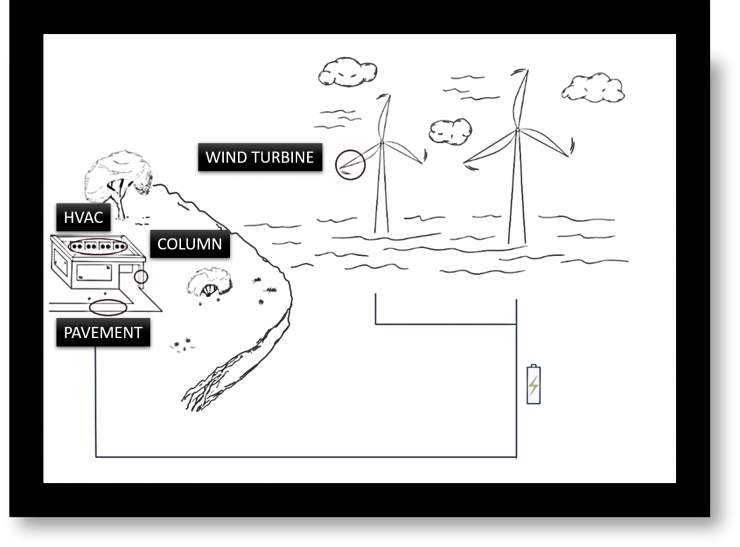Introduction & Integration Context
In this assignment we widen the view from a single system to a model of many systems put together, to get a broader look at interfaces and interactions between systems. Before we only looked at isolated systems, now more criteria and influences come together to form an interactive model. For this assignment the difficulty lies in figuring out a model, where the systems of each group member fits in. The systems we work with are a rigid pavement, an (offshore) wind turbine, a reinforced concrete column and a HVAC (Heating, Ventilation and Air conditioning) system.
To connect the wind turbine with the other systems, we thought of a building that manages and overviews the power outflow and functionality of the wind turbines. The building uses HVAC to achieve a comfortable working environment for the workers in the control rooms, as well as server and computer rooms. The building has a large entrance, where a 5 m long reinforced column is needed to carry the loads of the ceiling. For the workers to get to the building, a rigid pavement connects the building to other infrastructure like parking lots and a street. The wind turbine is connected with the building by power cables that run underground.
Our model therefore basically only consists of two main structures, that are connected by power cables. The building runs on the power provided by the wind turbine, which is a factor that needs to be thought of when analyzing each system’s interactions. All other energy produced is transferred to the power grid, where it is used by the infrastructure connected to it.
Group Members, our Systems and Subsystems-
Yunsu, HVAC System, Air-cooled Chiller
Leonard, Offshore Wind Turbine, Rotor Blades
Maria, Reinforced Concrete Column, Reinforced Concrete Column
Ronak, Rigid Pavement, Pavement Layer
Home Page | Maintenance Strategies | Life Cycle Analysis | Multi Objective Optimization
